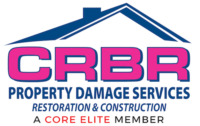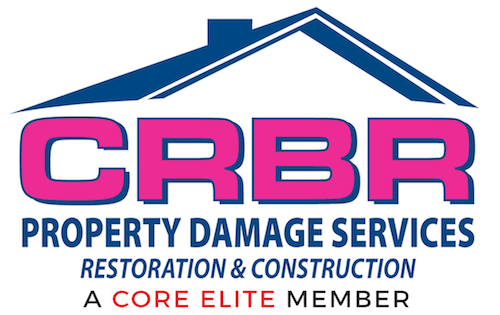You can stop leaks yourself-no experience required. We will show you how to hunt down and fix the most prominent types of roof leaks.
1. Age
Roofing materials, primarily asphalt shingles, get old and tired. Expansion and contraction with the change in temperatures cause aging roof protection to turn brittle and ultimately crack. Over time harsh rays from direct sunlight can melt the tar that holds composition shingles together. Father Time has not lost the fight yet, and when roofing materials run upon their life expectancy, it could be time to consider a brand-new roof at the first indication of a leak.
2. Brick Chimneys
While brick chimneys may seem durable, the mortar that unites the bricks together is nothing more than a hard-working compound of sand, water, and cement. Exposed to the weather, it can decay and crumble over a period. Examine the mud cap on top of the chimney for deterioration and investigate the mortared joints where the duct enters the roof. If patches are needed, it is a cheap and fast fix.
3. Flashing
Compromised flashing is a typical problem on a roof. Flashing is thin strips of metal placed at dangerous locations for leaks around a roof. They are bent at a 90-degree angle to connect to both the roofing material and the brick fireplace for a chimney.
Flashing must be accurately scaled to defend against water intrusion. It also needs to remain nailed into position, and yet if that is all squared away, the metal can rust or fracture.
Assume the cost of replacing worn-out flashing to run a few hundred dollars, depending on job scope and desired material. It may be intriguing to marshal the caulking forces and roof cement in the battle against faulty flashing; this is only a stopgap solution best reserved if you know the roof will soon be replaced.
4. Missing Shingles
If you find a shingle lying on your lawn, chances are the next rainstorm will be sending water into your house. Replacing a shingle is a matter of pulling off the nails from the course below and sliding the new shingle into position. Nail the new shingle down securely and then reinstall its neighboring shingles.
Do not anticipate attaining a flawless color match unless you have some leftover shingles from your existing roof that have been left out to weather as well. This procedure applies to damaged shingles as well, although you may not discover the cracked shingle until a leak has already happened. Depending on the angle of the roof, this can be a Do it your self-job or require an hour or two of a certified contractor’s time.
5. Vent Boot
The venting boot is a close connection to flashing. Manufactured from rubber, it slides over the plastic vent pipes that project from a roof to work with flashing to waterproof the intersection of the top and pipe.
Vent boots can be metal, plastic, rubber, or any mixture. When the gasket stops operating, the old boot must be removed, usually with the aid of a blade and a new one installed. Like shingle work, this is a situation that can be handled without a call to a contractor.
6. Holes
A hole can appear in a roof from a storm, wind damage, or creatures such as squirrels and raccoons. Roof holes can also be more tricky, living for years until an examination uncovers them. These tiny holes can result from misplaced nails.
The best fix is a tiny piece of flashing beneath the shingle and not just a bit of caulk. Here is another easy job for the homeowner or can be combined with a meticulous examination from a professional roofer.
7. Complex Roof Design
All those valleys and grades can be an invitation to disaster if they are not accurately scaled. Installing a leak barrier that prevents water from flowing off the roof and still looks beautiful is a job for specialists, and expect to pay for the complexity of your roofline.
Complex roofs can be problematic even when properly maintained. In icy areas, a roof’s shape may not work in helping snow slide off the tip of your roof. An ice dam might form from a mixture of melting from your attic’s temperature and refreezing on the frozen edges at the base of an incline.
Ice dams place uninvited weight stress on a roof and keep corrosive water in touch with the roof surface for extended periods.
If you cannot have the corners of your roof clear with a roof rake or ice melting solvent, an alternative would be roof edge heating cables. — These can cost anywhere from fifty to a couple of hundred dollars, not including the bump in your winter electric bill.
Metal roofing or metal ice belts can also be an excellent option to prevent many issues associated with the snow build-up.
8: Blocked Gutters
If your gutters are too cluttered with junk to permit water to flow away from your roof and foundation, that is an attraction for problems. Grab a ladder and some gloves and get the job finished — or pay someone to clean out those obstructed gutters.
An expert gutter cleaning cost will vary from $100 to 300 dollars, depending on the scope of your property and the quantity of debris needed to be removed.
9: Skylights
Skylights can immediately transform any room or interior space! Hopefully, yours was tailored and installed correctly.
Leaks can sprout down the sides of inadequately fitted skylights, and the rubber seal around the glass can weather out as well, breaking the water barrier.
Inspect for cracks in the flashing along the top and the sides of the skylight, as well as any missing or damaged shingles nearby it. Also, assure the skylight was fitted with proper pitch. Most skylight leaks happen due to flashing problems or incorrect installation, not the glazing breakdown that comes with the skylight.
Suppose you find cracks in the flashing around the skylight or any missing or damaged shingles. In that case, the skylight will require being professionally restored or replaced, with new flashing and shingles implemented. If the rubber seal enclosing the skylight has dried out, the skylight will need to be professionally repaired.
A temporary repair will involve applying high-quality caulk such as Vulkem or Lexel. — The cost of a temporary patch will be anywhere from $50 to $300.
To professionally re-shingle and re-flash a broken skylight will run anywhere from $300 to $1,000 depending on the ease of access (amount of stories and roof slope) and the amount of labor required. Replacing a leaky skylight altogether will cost from $1,250 to $2,500 for most roofs.
10: Shiners
Not every roofing nail finds its mark. If one has missed the rafters and protruded inside the attic, it has a good water damage chance. On chilly nights in an unheated attic, the exposed metal nail can frost up.
When the weather warms throughout the day, the frost will melt away and begin trickling. It may not appear like much until it occurs day after day after day, and you suddenly have a brown spot on your room ceiling. Your only short-term expense for this fix will be purchasing side-splitting pliers and a little bit of time.
Having moisture that creates shiners in your attic indicates that your attic space is not insulated nor ventilated correctly. This will need to be modified if you want to continue the longevity of your roof deck and help reduce the chance of ice dams growing on your roof.
Fixing any issues with your attic insulation and ventilation will also help upgrade your home’s overall energy efficiency and comfort and help improve your roof’s overall performance and durability.
#restoration #waterdamage #roofleaks #roofingcontractors #boardup

